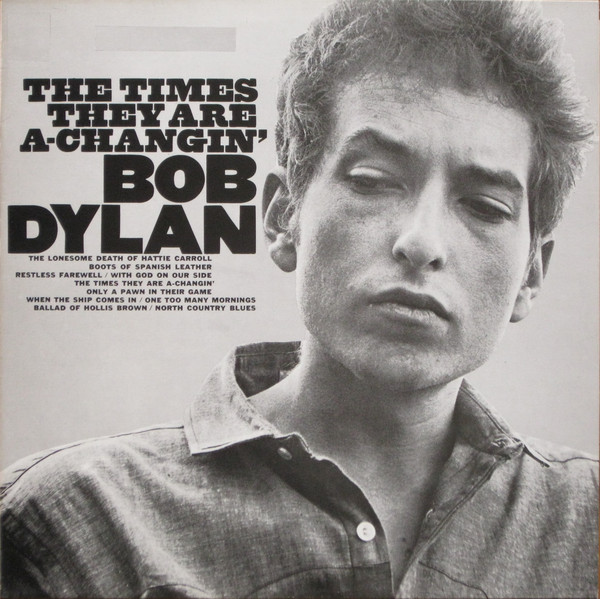Various forms of the records-that-changed-my-life meme have been making the rounds lately, so I came up with my own version, which I call “The Twenty-Five Record Albums That Changed My Life.” Throughout the coming month, I’ll write about one of these albums every weekday in the order in which I first heard them:

This album, which came out in 1964, was the first one on which Bob Dylan sang nothing but his own material, accompanied only by his harmonic and acoustic guitar. I was introduced to it four years later by Bob Nelson, my eighth-grade social-studies teacher, who decided for reasons of his own to introduce me to the music of my own time.
It was, as the saying goes, a good day’s work: I’ve spent much of the rest of my life listening to, and thinking about, the records that Mr. Nelson (as I invariably called him, having been raised by my parents to be polite to my elders) loaned me that year. I wonder whether he had any idea back then what an impression they would make.
As I wrote in this space four years ago:I’d listened to music of sundry kinds throughout my childhood, but I discovered it—all of it—in 1968, the year I turned twelve. Prior to that time, my knowledge of what it sounded like was mostly limited to my father’s record collection, which consisted in the main of swing and jazz albums and pop singles from the Fifties, augmented by what I saw and heard on TV. Smalltown, U.S.A., had only two AM radio stations, neither of which was hip by any conceivable standard. They played the Top 40, and the best-selling singles of 1967, according to Billboard, were, in descending order, Lulu’s “To Sir With Love,” the Box Tops’ “The Letter,” Bobbie Gentry’s “Ode to Billie Joe,” the Association’s “Windy,” and the Monkees’ “I’m a Believer.”
Yes, there were more galvanizing sounds to be found on the airwaves. Billboard’s Hot 100 for 1967 also included, among other things, the Beatles’ “All You Need Is Love,” James Brown’s “Cold Sweat,” Buffalo Springfield’s “For What It’s Worth,” Aretha Franklin’s “Respect,” the Jefferson Airplane’s “Somebody to Love,” the Rolling Stones’ “Ruby Tuesday,” Sam & Dave’s “Soul Man,” and the Spencer Davis Group’s “Gimme Some Lovin.’” But I don’t remember hearing any of them that year, at least not on the radio. The hits of 1967 that I recall most clearly, if not nostalgically, are (I blush to admit it) “Incense and Peppermints” and “Snoopy Vs. the Red Baron.” What can I say? I was eleven and still in a state of unkissed innocence.
All that began to change when I took up the violin in the fall of 1967 and, a year later, fell into the clutches of Bob Nelson, a bearded social-studies teacher who took it upon himself to force my ears open by loaning me a stack of albums from his personal collection….
The first of Mr. Nelson’s albums to which I remember listening was The Times They Are A-Changin’. It was Dylan’s political balladry that hit me hardest at first, though it was “One Too Many Mornings” that stayed with me longest. Mostly, though, what I remember best is the raspy, lonely sound of Dylan’s entwined voice and harmonica. It had nothing in common with the smooth, jazzy balladry of the Fifties that my father loved. It was something new and different, and I responded to it immediately and wholeheartedly. I can’t remember the last time I listened to The Times They Are A-Changin’, but I have no trouble calling it up in my mind’s ear a half-century after I first heard it. You never forget the sound of the future calling out to you.
(To be continued)
* * *
Bob Dylan sings “Blowin’ in the Wind” on TV in 1963:
* * *
To read about album #1, go here.
To read about album #2, go here.
